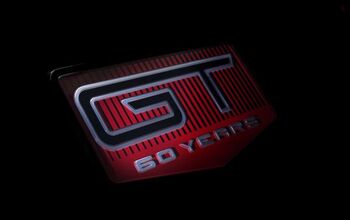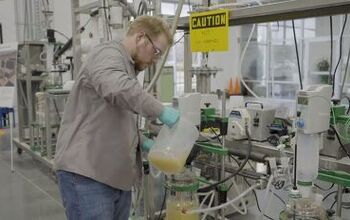Making EVs Work The American Way
Nissan is determined to sell electric cars in the US beginning in 2012, but the problem of building a charging infrastructure continues to bedevil product planners. Charging stations must be plentiful, convenient, and most importantly EV owners must be willing to wait there at least half an hour to complete a fast-charge of their EV’s batteries. Having added it all up and thrown in just a dash of condecension towards American culture (or lack thereof), Nissan’s boffins reckon that fast food joints are the perfect location for EV charging station, reports Automotive News [sub]. Of course the idea of sitting around a fast food joint for a half-hour while your car recharges for another 80 miles of driving kind of defeats the idea of fast food, but no matter.
Maybe we can see this as an excuse to bring back drive-ins with roller skating waitresses. Just imagine sipping a malt and putting the moves on Peggy Sue all while recharging your EV. The future is now! All kidding aside, Nissan is actually just desperate to get anyone to install EV charging stations for free. They’re asking dealerships to to install recharging stations as a “courtesy” to drivers who pass through town, and are talking to every government, utility, business and parking garage that will listen. Maybe they figure if Micky D’s went for that $1 DVD rental idea, they might spring for EV charging too.
More by Edward Niedermeyer


































Comments
Join the conversation
Interesting math, cmcmail. But another thing we need to figure in is the tax taken by the second law of thermodynamics. The gasoline still has to go through a heat engine, which will take at least 50% of its energy in waste heat. The electricity has already paid that tax. So we might get double the useful energy from it. Maybe more.
Tesla, We must also include the energy lost during the battery charge, no where near as much as an IC engine, but it is app. 20% lost as heat etc. If the electricity was generated by coal or oil etc there is loss of energy converting it into electricity in the first place.Changing forms of energy always has a premium, regardless of the Thermodynamic laws involved. And the grid isn't exactly bursting with extra electricity. There certainly applications for PHEV's, but they will not replace liquid fuels for some time. Batteries today are very similar to Edison's. We have been working on them for 100 years, but no energy dense solution is on the horizon (that doesn't require subsidies). Another consideration is the production of heat,required in the northern climates, it is a useful bonus with IC motors, it will cut into range significantly as will air conditioning.
Love the photo. Parkette Drive-In on New Circle Road in Lexington, Kentucky. That place is the real deal - period food and waitresses (rot-gut and rotten teeth, respectively) and a pretty good old-car night.
-lowinor Ford’s increases in efficiencies building gasoline engines, and the falling price of gas killed the electric car the first time around. It was the introduction of the electric starter motor after 1912 which got gasoline cars seriously mainstream. Manual cranking was beyond the physical capability of a lot of people and fraught with danger if you were too timid in the follow through. I'll always remember in the fifties, my father pre heating spark plugs on the gas range before going out to crank his '53 Ford Thames 5cwt van. We discussed 'range anxiety ' with EVs earlier, well LOL there was also 'crank handle anxiety ' back then. When my father moved up to his first car - a Hillman Super Minx - he expressed concerns that he better not have trouble starting it in the cold since there was no provision for a starting handle. Yep, that hole below the radiator was ominously missing. T2